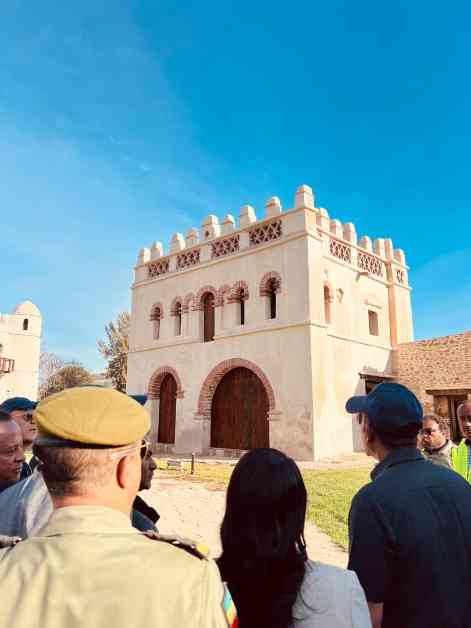Renovation Debate: Gondar’s Fasiladas Castles – Ethiopia Observer
A recent renovation of Gondar’s iconic Fasiladas castles has stirred up a heated debate among historians, architects, and local residents. The grand walls and castles, originally crafted by Emperor Fasiladas in the 17th century, have long been a symbol of pride for the city. However, the recent restoration, which unveiled a new color scheme featuring white and pale shades, has left many questioning the decision behind altering the historical authenticity of these architectural marvels.
**Historical Authenticity vs. Contemporary Standards**
Critics are puzzled by the choice to deviate from the original hues that had defined the castles for centuries. The altered appearance has sparked concerns about whether the restoration truly honors the rich history and legacy of the structures. “Why has the historic character of these buildings been changed to a whiter palette?” one observer pondered, echoing the sentiments of many who are uneasy about the direction the restoration has taken.
**Architect’s Defense and Insight**
Renowned architect Fasil Giorghis, a key figure in the renovation process, has stepped forward to address the mounting criticism. As a consultant on the project, he stands by the new design choices, emphasizing that the restoration work meticulously followed contemporary regulatory standards. Giorghis shed light on the fact that the renovation was underpinned by a thorough examination of the castles’ original construction materials and techniques.
In an interview with BBC Amharic, Giorghis offered valuable insights into the historical context of the castles. He explained that the original structures were crafted from rough-hewn basalt held together by lime mortar. The weathered appearance that many have come to associate with the castles over time, he elaborated, was a result of centuries of exposure to the elements, giving them a distinct, “shrouded” look.
**Balancing the Past and Present**
The clash between preserving historical authenticity and meeting contemporary standards is a conundrum that plagues restoration projects worldwide. The Fasiladas castles’ renovation serves as a microcosm of this ongoing debate, highlighting the delicate balance that must be struck between honoring the past and embracing the future. As Gondar grapples with the aftermath of this contentious restoration, the broader question lingers: how do we ensure that our historical landmarks retain their essence while adapting to the demands of the present and future?
In the end, the fate of the Fasiladas castles serves as a poignant reminder of the complexities inherent in preserving our architectural heritage. As we navigate the intricate dance between tradition and innovation, perhaps the true beauty lies in finding a harmonious blend that pays homage to the past while paving the way for a vibrant future.

